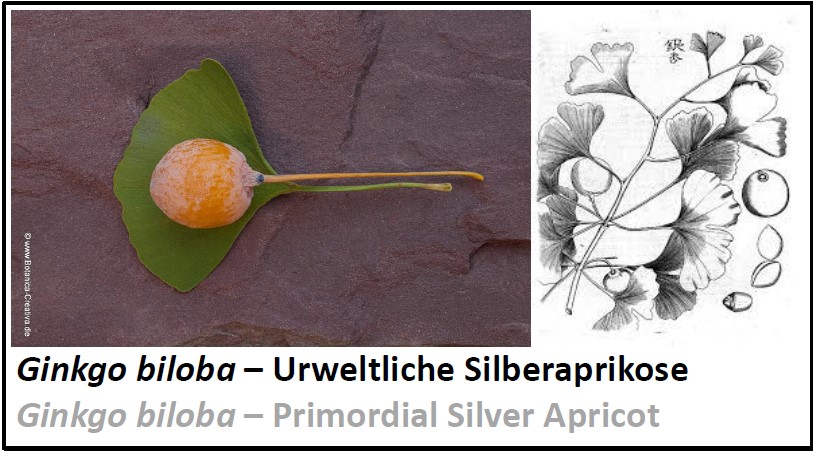 |
A magnificent specimen can be found in the Ehrenhof, but also in the Botanical Garden it grows at the South face of the greenhouses. Around 200 million years ago, this tree conquered many continents of our planet, but similar to the dinosaurs, it disappeared at the end of the Cretaceous, around 60 million years ago. The only surviving species is detectable since then – this makes Ginkgo biloba the oldest species alive. Naturally it is only found in the South Chinese mountains near the city of Chongqing, but later it was spread as temple tree all over East Asia.
The German explorer Engelbrecht Kämper managed, as one of few foreigners, to travel in Japan at the time of the Tokugawa Shogun, when the country was completely isolated from the outer world. He saw and described this curious tree and asked his Japanese lover to note down the characters (Silver, Apricot). These characters should actually be read as Gin-Kyo, but against all rules this tree is known in Japan under the name of itchoo, the word “Ginkgo” is not even understood. After his return to Germany, the exotic name (Ginkyo) was mutilated during printing the Flora Japonica into Ginkgo and this mistake was adopted also in Linné’s famous Systema Natura and, thus, was carved in stone. The fan-like leaves remind of the Maidenhair Fern, but the Ginkgo tree belongs to the Gymnosperms and is, therefore, a relative of our conifers. A very archaic relative, though – while it has already a pollen tube, this is bursting just close to the egg cell and releases a ciliated creature that swims the last mikrons to fertilise the egg. This ciliated being is a spermatozoid as is otherwise found in the ferns. The Ginkgo Tree assembles, thus, ancient, and modern traits – a kind of botanical Archaeopteryx.
|


